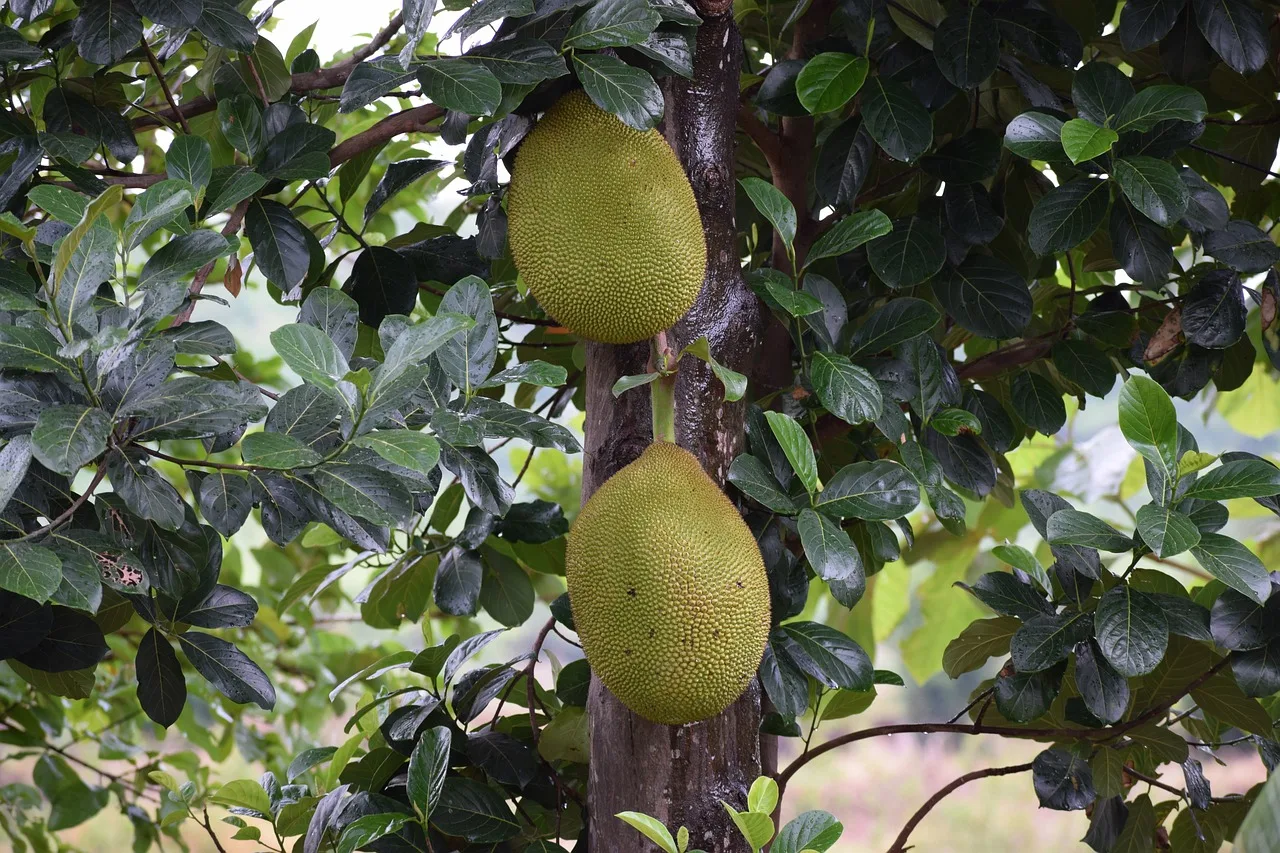
Growing jackfruit at home is an exciting and rewarding endeavor for any gardening enthusiast. This tropical fruit, known for its large size and unique flavor, can be easily cultivated in your own backyard. In this ultimate guide, I will provide you with all the information you need to successfully grow jackfruit at home, from choosing the right variety and planting the saplings to caring for the trees and harvesting the delicious fruits.
Benefits of growing jackfruit
There are numerous benefits to growing jackfruit at home. Firstly, jackfruit is a highly nutritious fruit that is rich in vitamins, minerals, and antioxidants. It is also a great source of fiber, which is essential for a healthy digestive system. Secondly, growing your own jackfruit allows you to have access to fresh, organic fruit right in your backyard. You can avoid the use of harmful pesticides and chemicals that are commonly found in store-bought fruits. Lastly, growing jackfruit is a sustainable option as it reduces the carbon footprint associated with transporting and storing the fruit.
Climate and soil requirements for growing jackfruit
Jackfruit trees thrive in warm, tropical climates. They require a minimum temperature of 25 degrees Celsius and a maximum temperature of 35 degrees Celsius. The trees are sensitive to frost and cannot tolerate temperatures below 5 degrees Celsius. It is important to choose a location in your garden that receives full sun for at least six hours a day.
In terms of soil, jackfruit trees prefer well-draining, sandy loam soil. The pH level should be between 6 and 7.5, which is slightly acidic to neutral. It is recommended to amend the soil with organic matter, such as compost or well-rotted manure, to improve its fertility and drainage.
Choosing the right variety of jackfruit tree
When it comes to choosing the right variety of jackfruit tree, there are several factors to consider. Firstly, you need to determine the space available in your garden, as some varieties can grow up to 80 feet tall. If you have limited space, look for dwarf or medium-sized varieties that are more suitable for small gardens.
Secondly, consider the fruit quality and flavor. Some varieties are sweeter and juicier, while others have a more starchy texture. Research different varieties and read reviews from other gardeners to find the one that suits your taste preferences.
Lastly, take into account the pollination requirements of the variety. Some jackfruit trees are self-pollinating, while others require cross-pollination with another tree. Make sure you have enough space to accommodate two or more trees if cross-pollination is necessary.
Purchasing and planting jackfruit saplings
When purchasing jackfruit saplings, it is important to buy them from a reputable nursery or garden center. Look for healthy saplings with a well-developed root system. Avoid saplings with yellow or wilted leaves, as these may indicate poor health.
Before planting the saplings, prepare the soil by removing any weeds or debris. Dig a hole that is twice the size of the root ball and gently place the sapling in the hole. Backfill the hole with soil, making sure to firm it around the roots. Water the sapling thoroughly to settle the soil and promote root growth.
Jackfruit tree care and maintenance
Proper care and maintenance are essential for the healthy growth of jackfruit trees. Here are some tips to keep your trees thriving:
Pruning and shaping jackfruit trees
Pruning is important to maintain the shape and size of jackfruit trees. It is best to prune the trees during the dormant season, which is usually in late winter or early spring. Remove any dead, damaged, or diseased branches using clean pruning shears. Prune the branches that are crossing or rubbing against each other to prevent damage and improve air circulation within the canopy.
Shaping the tree is also important to ensure proper light penetration and fruit production. Train the tree to have a central leader by removing competing branches. This will help create a strong and balanced structure.
Fertilizing and watering jackfruit trees
Jackfruit trees require regular fertilization to promote healthy growth and fruit production. Apply a balanced fertilizer with a ratio of 10-10-10 or 12-6-6 every two to three months during the growing season. Avoid over-fertilizing, as it can lead to excessive vegetative growth and reduced fruit production.
Watering is crucial for jackfruit trees, especially during dry periods. Provide deep and thorough watering once a week, ensuring that the water penetrates the root zone. Avoid over-watering, as it can cause root rot and other diseases. Mulching around the base of the tree can help retain moisture and suppress weeds.
Common pests and diseases of jackfruit trees
Like any other plant, jackfruit trees are susceptible to pests and diseases. Here are some common ones you should be aware of:
Pests
- Jackfruit borer: This is a serious pest that attacks the trunk and branches of the tree. Look for entry holes and sawdust-like frass as signs of infestation. To control the borer, remove and destroy affected branches and apply an insecticide recommended for borers.
- Fruit fly: Fruit flies lay their eggs in the immature fruit, causing it to rot and drop prematurely. To prevent fruit fly infestation, you can use fruit fly traps or cover the developing fruits with fine mesh bags.
Diseases
- Anthracnose: This fungal disease causes dark, sunken lesions on the fruits, leaves, and twigs. To control anthracnose, remove and destroy infected plant parts and apply a fungicide recommended for anthracnose control.
- Root rot: Root rot is caused by waterlogged soil and can lead to wilting, yellowing leaves, and stunted growth. To prevent root rot, ensure proper drainage and avoid over-watering.
Harvesting and storing jackfruit
Jackfruit trees typically start bearing fruit within three to four years after planting. The fruits are ready to be harvested when they turn yellowish-green and emit a sweet fragrance. To harvest the fruit, use a sharp knife or pruning shears to cut the stem close to the fruit.
Once harvested, jackfruits can be stored at room temperature for up to a week. If you want to prolong the shelf life, you can store them in the refrigerator for up to two weeks. It is important to note that jackfruits do not ripen after being picked, so make sure to harvest them at the right stage of maturity.
Delicious jackfruit recipes to try at home
Jackfruit is a versatile fruit that can be used in a variety of dishes, both savory and sweet. Here are a few delicious recipes to try at home:
- Jackfruit pulled pork: This vegan alternative to pulled pork is made with young jackfruit, which has a meat-like texture when cooked. Simply shred the jackfruit, sauté it with your favorite barbecue sauce, and serve it on a bun.
- Jackfruit curry: Jackfruit curry is a popular dish in many Southeast Asian cuisines. Cook the jackfruit with coconut milk, curry paste, and spices for a flavorful and aromatic curry.
- Jackfruit ice cream: Blend ripe jackfruit with coconut milk and sweeten it with agave syrup or sugar. Freeze the mixture in an ice cream maker for a delicious and refreshing treat.
Frequently asked questions about growing jackfruit
- Can I grow jackfruit in a container? While it is possible to grow jackfruit in a container, it is not ideal. Jackfruit trees have an extensive root system and can grow up to 80 feet tall. If you have limited space, consider growing dwarf or medium-sized varieties.
- How long does it take for a jackfruit tree to bear fruit? Jackfruit trees typically start bearing fruit within three to four years after planting.
- Can I grow jackfruit from seed? Yes, you can grow jackfruit from seed. However, it may take longer for the tree to bear fruit compared to planting a grafted sapling.
Conclusion
Growing jackfruit at home is a rewarding experience that allows you to enjoy the delicious fruits of your labor. By following the tips, tricks, and expert advice provided in this ultimate guide, you can successfully cultivate jackfruit in your own backyard. From choosing the right variety and planting the saplings to caring for the trees and harvesting the fruits, you now have all the knowledge you need to embark on your jackfruit-growing journey. So get ready to savor the tropical flavors and enjoy the bountiful harvests of your very own jackfruit tree!







